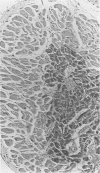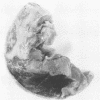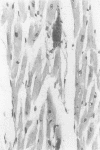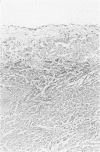Abstract
AIMS: To evaluate an immunohistological stain for complement component C9 as a method of detecting early myocardial infarction and to compare this with (1) an enzyme histochemical method and (2) conventional histological staining. METHODS: (1) Eight hearts taken at necropsy were stained using the nitroblue tetrazolium/phenazine methosulphate method and an immunohistological stain for C9. (2) Twenty five hearts from cases of suspected or confirmed myocardial infarction and 25 from cases without conventional evidence of infarction were stained for C9 and by haematoxylin and eosin. RESULTS: (1) The histochemical method indicated myocardial necrosis in five hearts and the C9 method in seven, all of which had clinical evidence of myocardial damage or a reason for it. The histochemical method required fresh myocardium, was difficult to use and was difficult to interpret. (2) Of 25 hearts with suspected or confirmed infarction, 24 were stained by the C9 method. Staining with haematoxylin and eosin showed infarction in 16 of these, all with infarcts at least 24 hours old; the other eight had clinical evidence of infarction less than 24 hours old. The heart not stained by C9 was from a patient who, on review, had no evidence of infarction. Of the 25 control hearts, none had infarction on staining with haematoxylin and eosin, but three were stained by the C9 method. These three were from patients with septicaemia or another reason for myocardial damage. CONCLUSIONS: The immunohistological method for C9 is a simple, reliable and sensitive method for the detection of early myocardial necrosis that could be used on formalin fixed, paraffin wax embedded necropsy material. This had advantages over a histochemical method and conventional staining with haematoxylin and eosin.
Full text
PDF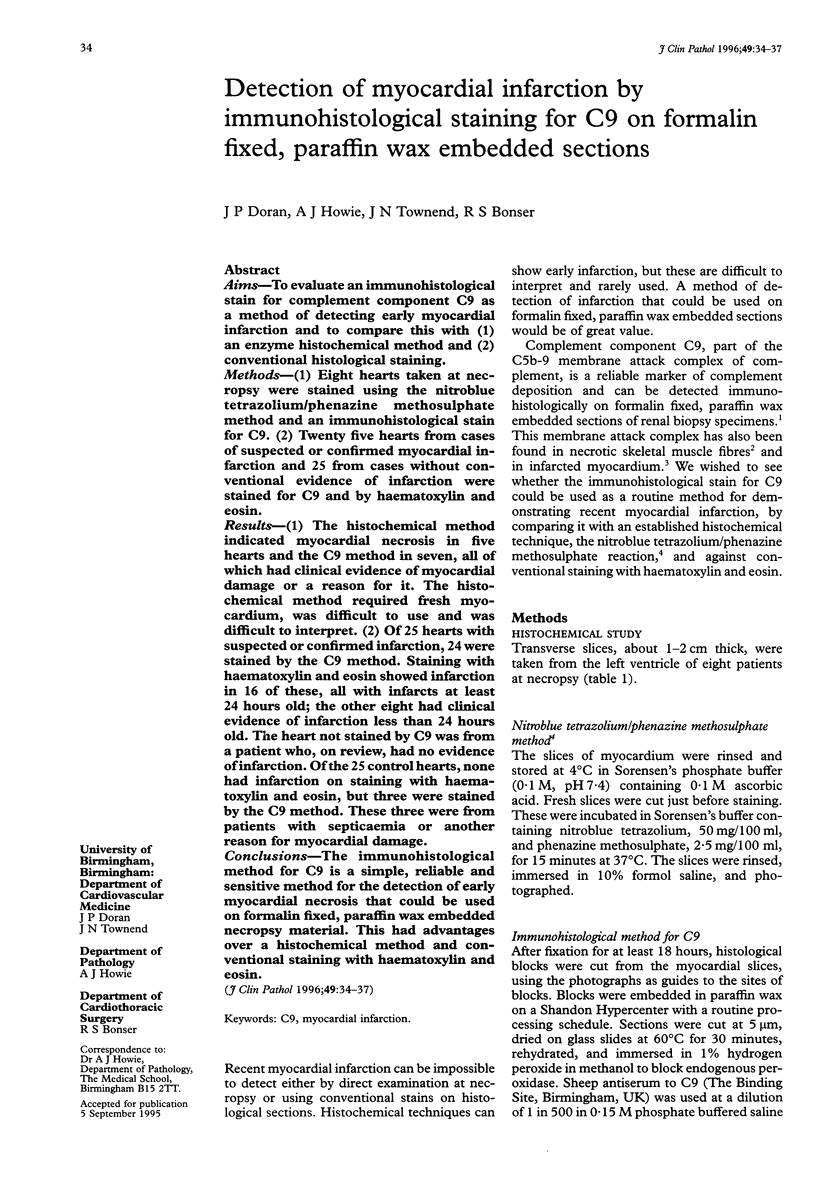
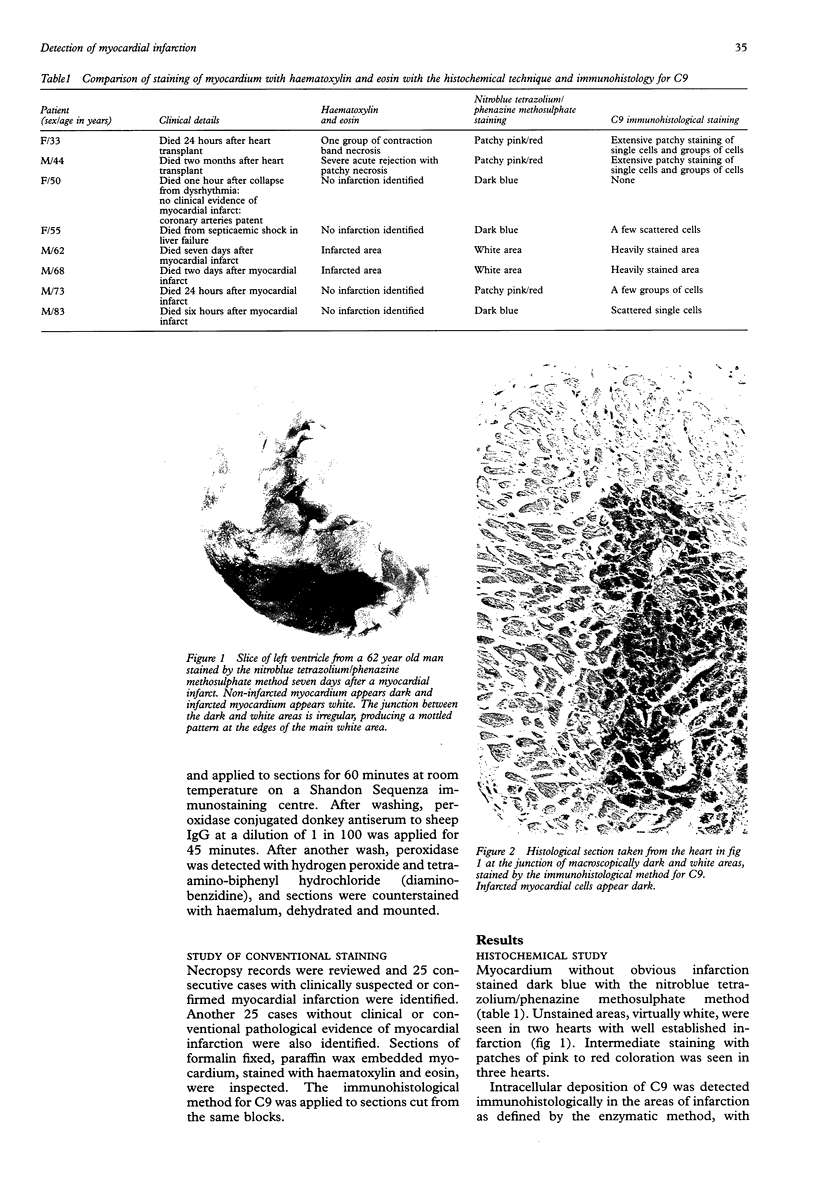
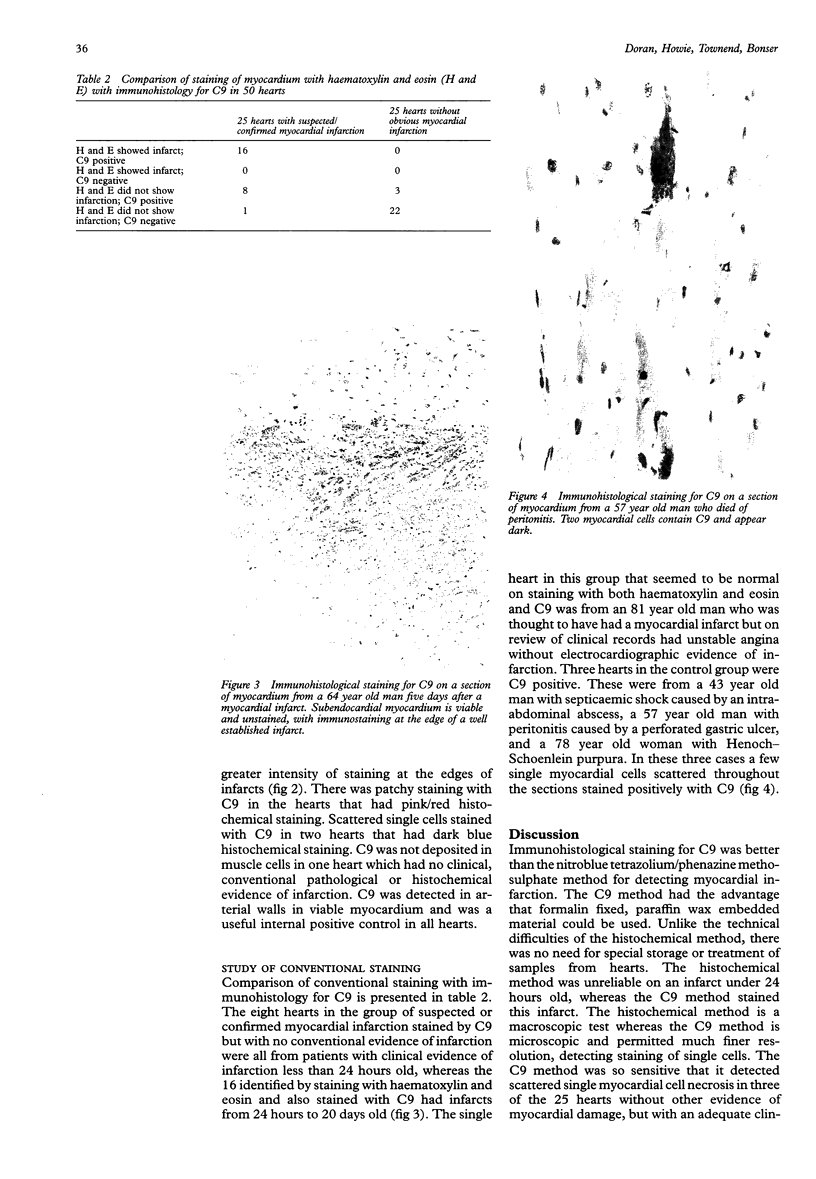
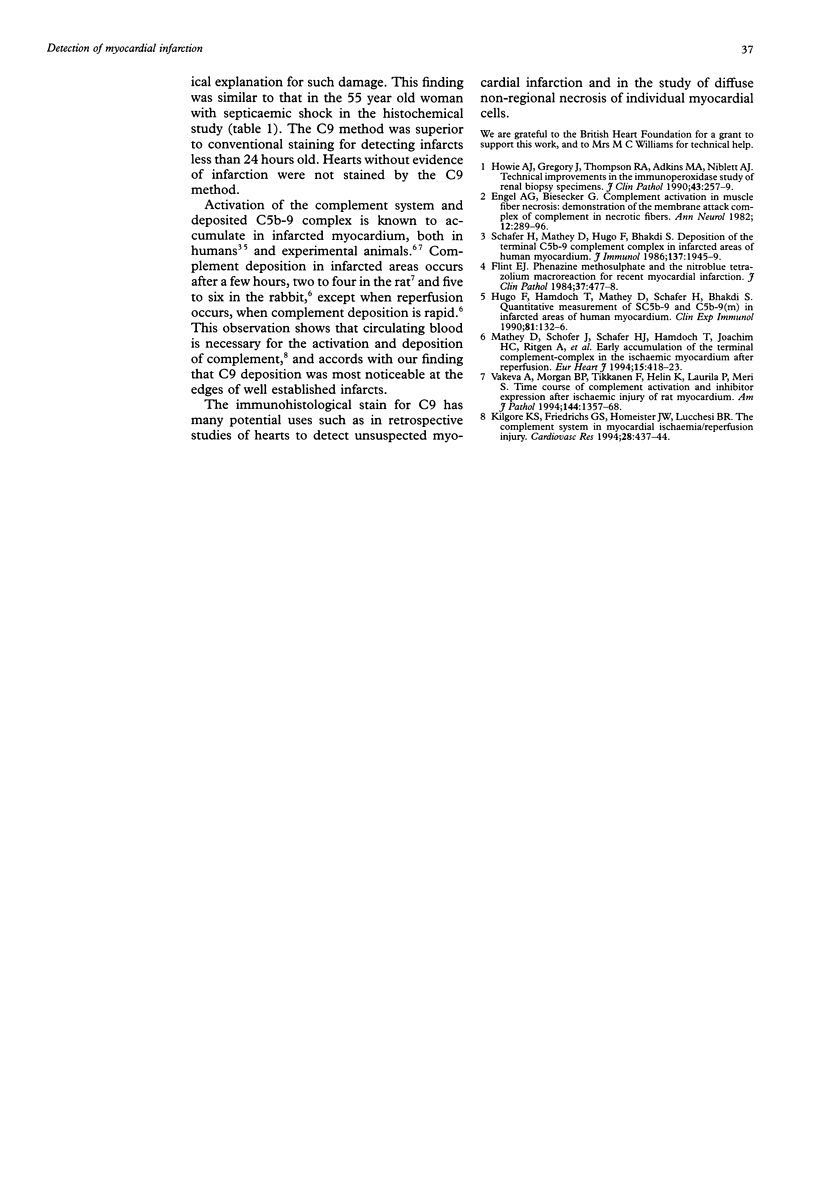
Images in this article
Selected References
These references are in PubMed. This may not be the complete list of references from this article.
- Engel A. G., Biesecker G. Complement activation in muscle fiber necrosis: demonstration of the membrane attack complex of complement in necrotic fibers. Ann Neurol. 1982 Sep;12(3):289–296. doi: 10.1002/ana.410120314. [DOI] [PubMed] [Google Scholar]
- Flint E. J. Phenazine methosulphate and the nitroblue tetrazolium macroreaction for recent myocardial infarction. J Clin Pathol. 1984 Apr;37(4):477–478. doi: 10.1136/jcp.37.4.477. [DOI] [PMC free article] [PubMed] [Google Scholar]
- Howie A. J., Gregory J., Thompson R. A., Adkins M. A., Niblett A. J. Technical improvements in the immunoperoxidase study of renal biopsy specimens. J Clin Pathol. 1990 Mar;43(3):257–259. doi: 10.1136/jcp.43.3.257. [DOI] [PMC free article] [PubMed] [Google Scholar]
- Hugo F., Hamdoch T., Mathey D., Schäfer H., Bhakdi S. Quantitative measurement of SC5b-9 and C5b-9(m) in infarcted areas of human myocardium. Clin Exp Immunol. 1990 Jul;81(1):132–136. doi: 10.1111/j.1365-2249.1990.tb05303.x. [DOI] [PMC free article] [PubMed] [Google Scholar]
- Kilgore K. S., Friedrichs G. S., Homeister J. W., Lucchesi B. R. The complement system in myocardial ischaemia/reperfusion injury. Cardiovasc Res. 1994 Apr;28(4):437–444. doi: 10.1093/cvr/28.4.437. [DOI] [PubMed] [Google Scholar]
- Mathey D., Schofer J., Schäfer H. J., Hamdoch T., Joachim H. C., Ritgen A., Hugo F., Bhakdi S. Early accumulation of the terminal complement-complex in the ischaemic myocardium after reperfusion. Eur Heart J. 1994 Mar;15(3):418–423. doi: 10.1093/oxfordjournals.eurheartj.a060516. [DOI] [PubMed] [Google Scholar]
- Schäfer H., Mathey D., Hugo F., Bhakdi S. Deposition of the terminal C5b-9 complement complex in infarcted areas of human myocardium. J Immunol. 1986 Sep 15;137(6):1945–1949. [PubMed] [Google Scholar]
- Väkevä A., Morgan B. P., Tikkanen I., Helin K., Laurila P., Meri S. Time course of complement activation and inhibitor expression after ischemic injury of rat myocardium. Am J Pathol. 1994 Jun;144(6):1357–1368. [PMC free article] [PubMed] [Google Scholar]



